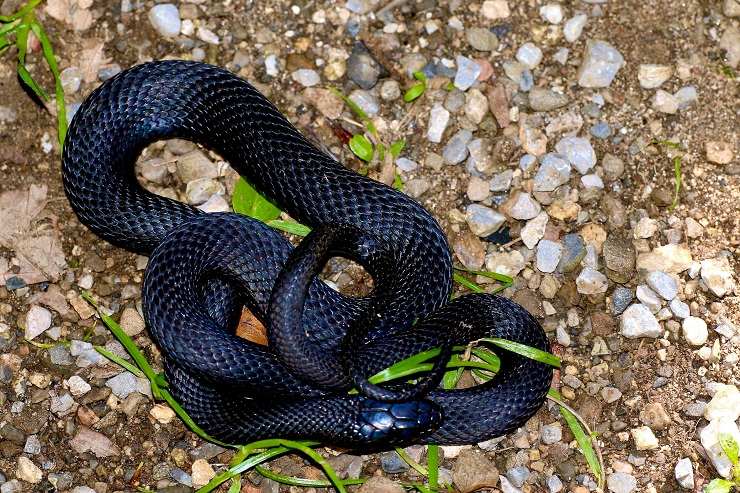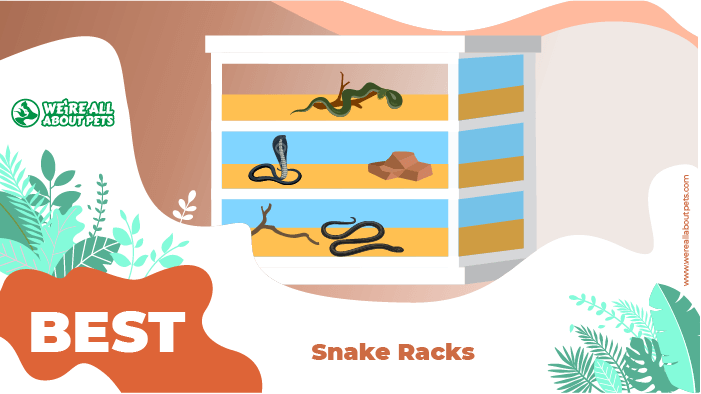What To Do When Your Snake Won’t Eat?
This page contains affiliate links. We may earn money or products from the companies mentioned in this post through our independently chosen links, which earn us a commission. Learn More
Having a snake that is not eating is one of the most common reasons for a snake owner to seek veterinary care. It’s hard to know what to do when your snake won’t eat. It may be due to husbandry or to an underlying medical problem. The purpose of this article is to help you learn steps you can take to intervene when your pet snake decides to refuse food, and to help you decide when it’s time to see a veterinarian.
Common Causes That Can Be Corrected At Home
Pet snakes refuse food for a number of reasons. For one, there are certain species of snakes that are predisposed. Ball pythons, cornsnakes, and kingsnakes will go off of their normal diet more frequently than many other species. Sometimes ball pythons in a new environment go months without a meal.
Often there are simple solutions to be identified and corrected by making changes to husbandry. Beginners to reptile care may make errors in care that are not obvious to them, even when reading about care. New snake owners need to seek help from a veterinarian earlier than experienced keepers.
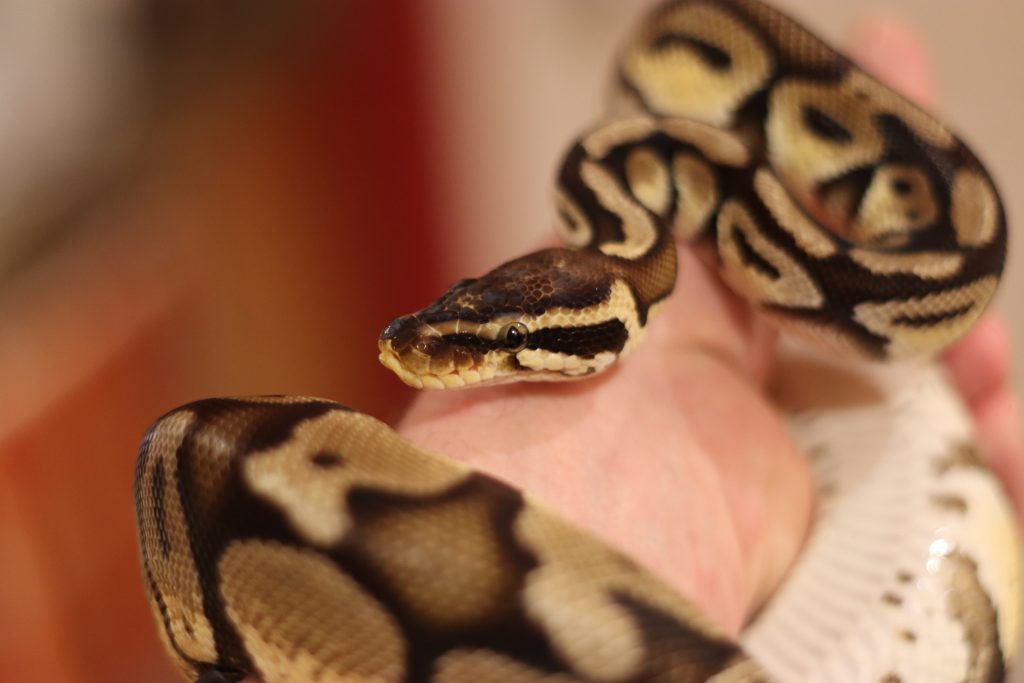
When setting up a snake’s cage, there are several parameters that must be established appropriately for each species of snake. Temperature, humidity level, substrate, location of hides and basking areas, and the cage size all need to be correct so that the snake feels safe.
Even a healthy snake will refuse food if it doesn’t feel safe in the enclosure. A new snake just coming home from the pet store may need several weeks to acclimate even if the cage is set up perfectly. As long as the snake is active and maintaining weight, this can be normal.
What Can You Do At Home?
If you have given time for a new pet snake to acclimate to the new environment and the behavior is normal, then there are some strategies that can be attempted. First, make sure that the feeding strategy is being done properly.
Select a prey item that’s no larger in diameter than the thickest area of the snake. For very small snakes, you may need to offer only the head of a pinky. When dealing with any snake that’s refusing food, weigh them weekly on a gram scale.
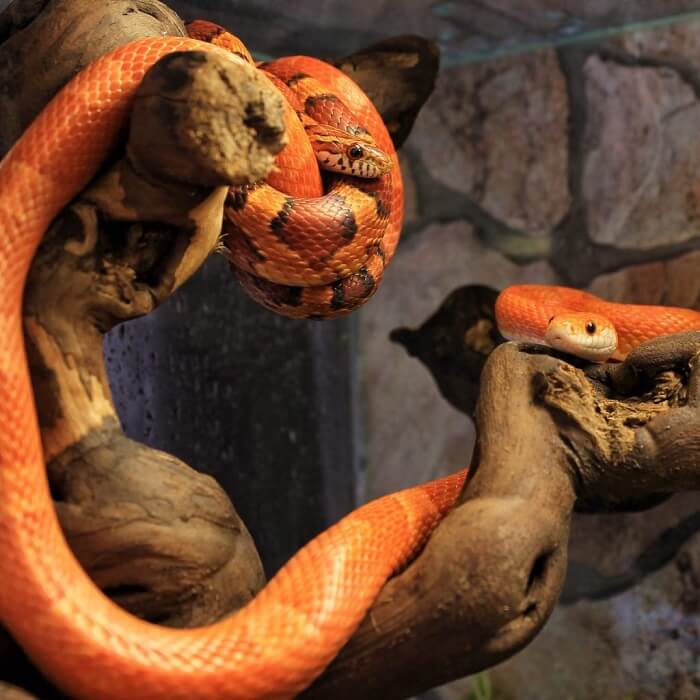
It’s important to use frozen mice or other frozen prey items. Thaw in warm water until they prey item is fully thawed. Your snake is unable to properly digest food items that aren’t fully thawed. They don’t produce their own body heat, so they’re unable to thaw anything that’s ingested frozen.
The water used for thawing should be not much warmer than 90 degrees Fahrenheit. Remember that the prey is swallowed whole and if it’s too hot, then it may cause burns in the esophagus.
Feed outside of the snake’s enclosure. A specific container for feeding is best. If fed in the enclosure, they may start to identify anything moving as food and will become difficult to handle. Using a separate container also helps prevent accidental ingestion of substrate. Place the container is a quiet, warm area away from visual distractions.
Allow 1-2 hours of time. If the snake hasn’t eaten in that time, then discard the prey time and return the snake to the enclosure. Offer food again at a different time of day after 1-2 days have passed. If three meals are missed, then it’s time to make an appointment with a veterinarian, but you can continue attempting to feed while waiting for the appointment.
What To Do When They’re Stubborn?
If the normal feeding routine doesn’t work, there are steps you can attempt that utilize the instincts and senses used for hunting in the wild. Remember, many snakes have relatively poor visual acuity and rely more on their sense of smell or detection of heat from prey.
- Ensuring the prey item is above room temperature helps create more aroma and provides a heat source for them to identify.
- You can use tongs to make sure that the rodent is the warmest item in the immediate area. Use the tongs to simulate movement and attract attention without risking a strike to your hand.
- If you snake is still not interested, then you can increase the scent by braining. The brain is exposed by opening the top of the head on the thawed rodent. You can also try opening the abdomen and exposing a small area of an internal organ.
- Finally, try different scents. In the wild, snakes may feed on amphibians, birds, or other types of small mammals. You can try offering frozen, thawed gerbils or hamsters. You can use bedding from amphibians or frogs to rub the scent of those animals onto the rodent.
Many people advise feeding live prey, but that is only done only as a last resort. It should not be attempted before a veterinarian has ruled out some more common health concerns. Only attempt live prey with the consent of the veterinarian, and under direct supervision the entire time that the live mouse is with your snake.
Many severe injuries have resulted from live rodents being left unattended with a snake that has health problems.
Illnesses That May Affect The Appetite
If the protocols above don’t restore your pet’s normal feeding schedule, then get a veterinary examination to look for subtle health concerns. A fecal test for parasites is commonly recommended. Blood testing to look for organ failure or systemic infection may also be recommended.
Your veterinarian may do a feeding of an easily digestible prescription food by passing a tube into the stomach. Sometimes that feeding may stimulate their appetite for the next meal.
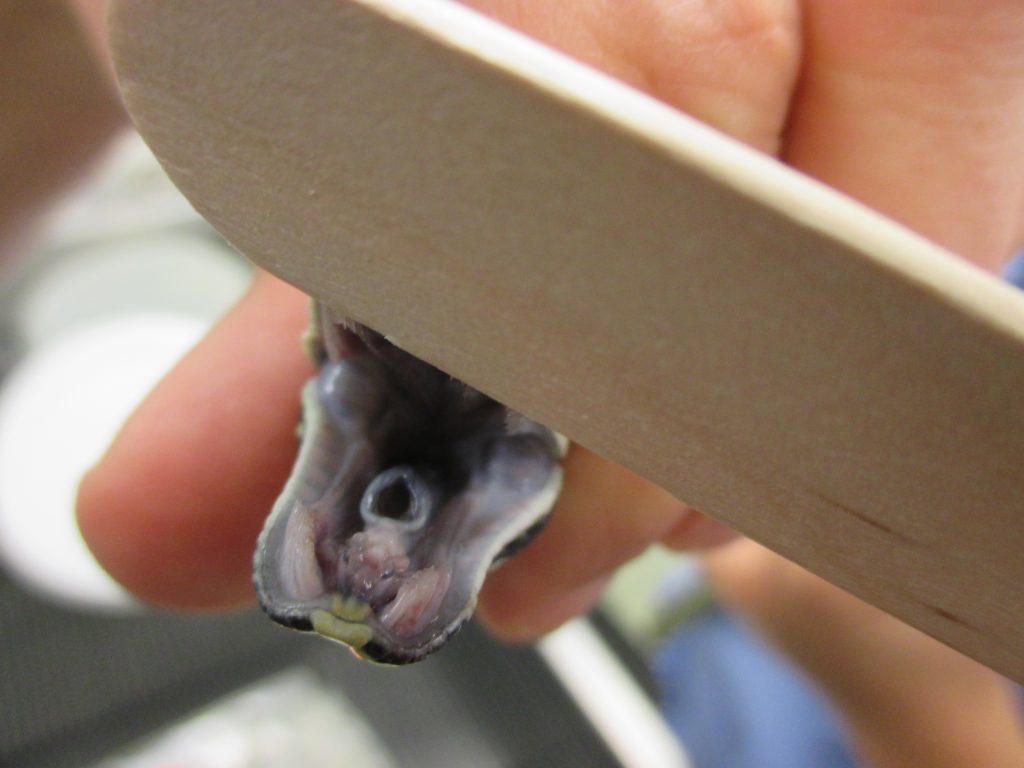
In addition to the timeline, there are some signs you may see that indicate a health issue requiring veterinary attention earlier.
- Any snake that loses 5% of the original body weight needs to be examined for underlying disease.
- A snake spending excessive time soaking in the water bowl may have mites or other skin disease and needs to be examined by a veterinarian.
- Any open mouth breathing or high-pitched sounds noted when the snake is breathing indicate possible respiratory infection. Respiratory disease affects their sense of smell reduces the energy they have for eating and digesting.
- Any “stargazing” behavior or abnormal movement indicates possible neurologic disease.
Treat these signs more urgently. Veterinary care can’t wait for continued feeding attempts in those cases. If you need to find a reptile veterinarian, you can start your search here.
Summary
There are many reasons for a snake to refuse food. Some of those may be treated at home by changing husbandry or using tricks to appeal to their senses and instincts. If a snake doesn’t respond to those attempts, or they have any signs of health issues, then veterinary care is required.
Frequently Asked Questions
How long is too long for a snake to not eat?
That varies some by age and species, but in general any snake that has skipped three meals, has any abnormal behavior, signs of health concerns or 5% weight loss when not eating needs to be evaluated by a veterinarian.
How do you force a snake to eat?
That isn't recommended. Injury can easily result if a force feeding is done incorrectly, and you may miss an underlying health concern by delaying veterinary care by force feeding.
What do you do when your python won't eat?
Make sure your husbandry is appropriate and that you're feeding in a proper area. You can try increasing the smell of the prey item and simulating movement with tongs. However, if tricks aren't working, a veterinarian should be consulted.
Why is my snake not eating for months?
There are several possible reasons. Some reasons may be related to husbandry, some may be behavioral, and some may be the result of underlying health concerns.


